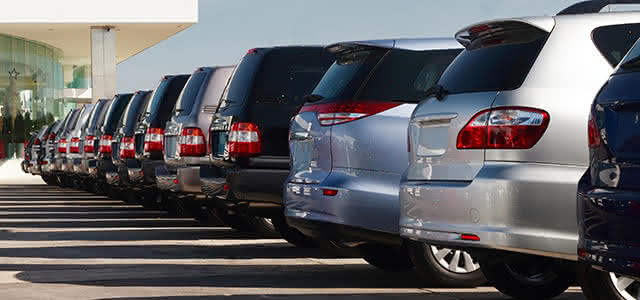Continue to
is responsible for their content and offerings on their site, and their level of security may be different from ours. Please refer to their privacy policy and terms of use for details.
Before you take your first test drive, here’s what you need to know to make sure the process goes smoothly and you get the best deal for your money.
In the market for a new car? If you’re like many people, you may be excited about the prospect of a new car but anxious about the car buying process. There are a few ways you can get prepared before heading to the dealership that can help you save time and possibly money.
Here are 5 things you should know to help you be prepared before you set foot on an auto dealership lot.
1. Know what rate you’re approved for
Determining how you’ll finance your car should be one of your top priorities before you make your final car selection. In most instances, this includes two options: You can get financing terms ahead of time (through a bank or lending institution), or obtain financing at the dealership. If you choose to work with a bank or lending institution ahead of time, you may be able to save time at the dealership after you negotiate the price of the car you’re interested in purchasing. If you do explore other financing options, having loan terms already in hand doesn’t just make the process better, it gives you a point of comparison, so you’ll know if your loan is the lowest rate or if there’s a better deal out there.
Here are some key facts to know if you’re considering an auto loan:
- The better your credit history, the better the interest rate you’ll get
- An annual percentage rate (APR) of 0% may seem appealing, but the terms of the loan might result in a higher monthly payment due to a shorter repayment period
2. Know which factors impact your payment
No matter where you choose to obtain your financing, it’s important to understand how the terms of your loan impact your monthly payment and total cost of the loan. For example, APR has a relatively small effect on monthly payments. In fact, there are two other inputs that have a bigger influence:
- The loan and down payment: A smaller loan amount or a higher down payment can decrease your monthly payments
- The term: A longer repayment term can lower monthly payments, but you may end up paying more in total over the life of the loan
Learn more about how car loans work or use the Bank of America auto loan calculator to run the numbers specific to your situation.
3. Know the pros and cons of 0% APR vs. a cash rebate
Some dealerships have promotions that offer cash rebates or no-interest financing for a new vehicle purchase. While these offers may seem attractive, it’s important to weigh their pros and cons first. Sometimes a cash rebate combined with a low-rate auto loan can be a smarter option vs. a 0% APR. A cash rebate used to reduce the overall cost of the vehicle may lower the loan amount resulting in savings over the life of the loan. If you qualify for a 0% APR auto loan be sure to find out what the repayment term is. Then use an auto loan calculator to compare a 0% APR loan at a higher loan amount vs. a low-rate auto loan with the rebate lowering the loan amount.
4. Know if new or used is right for you
It’s the perennial question: Should you buy a new car or opt for used? You may be tempted to make this decision based purely on cost, but there’s more than sticker price to consider. For example with used vehicles you might experience less depreciation, but have higher maintenance and repair costs.
In contrast, new vehicles typically have potential for a lower interest rate on auto loans and lower maintenance and repair costs.
Find out more about the differences between buying a new or used car
5. Know the differences between a loan and a lease
Think of it like renting vs. owning. When you buy (own), you finance the entire cost of the vehicle, regardless of how long you plan to use it or how many miles you put on it. Leasing means you finance the cost of the car only while you lease (rent) it—you pay the difference between the value of the car when you first get it and when the lease ends.
If you’re still undecided, consider these factors:
- How much do you drive? There’s a limit to how much mileage you can put on a leased car to avoid mileage fees.
- Do you take good care of your car? Leased cars need to be returned in good condition to avoid wear-and-tear penalties.
- Are you expecting major life changes? When you own your car, you can sell it to accommodate changing circumstances, like having a baby or moving to a new city. Although some manufacturers let you sell or transfer a leased car, you’ll often have to pay a fee to terminate a lease agreement early.
No matter what type of car you’re looking to buy, remember that it can pay to do your homework and be prepared before heading to the dealership.
Ready to get started? Apply to find out what auto loan rate you qualify for through Bank of America and be prepared before heading to the dealership.





